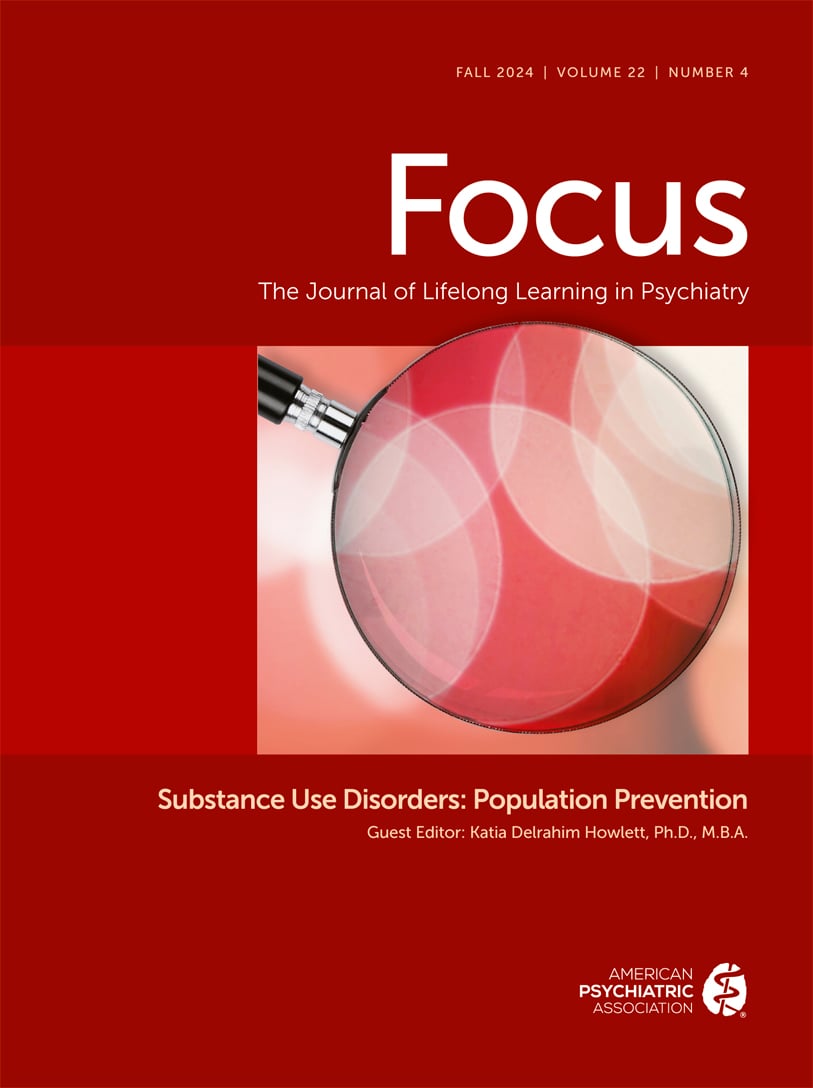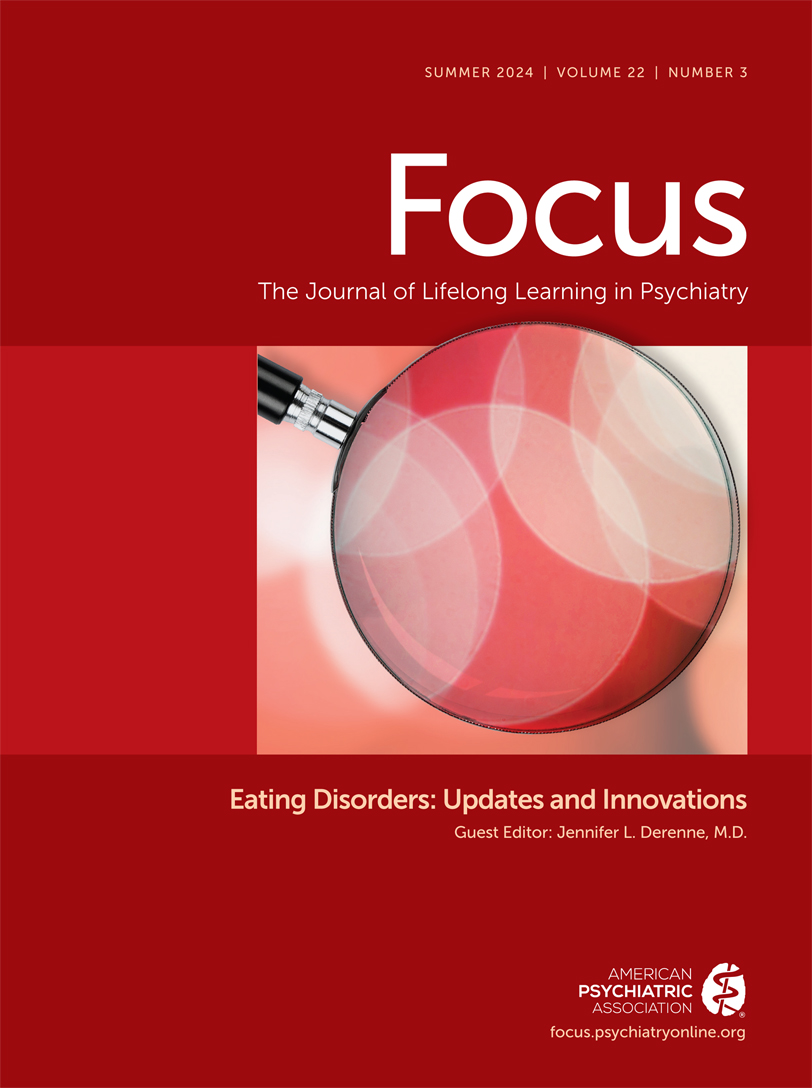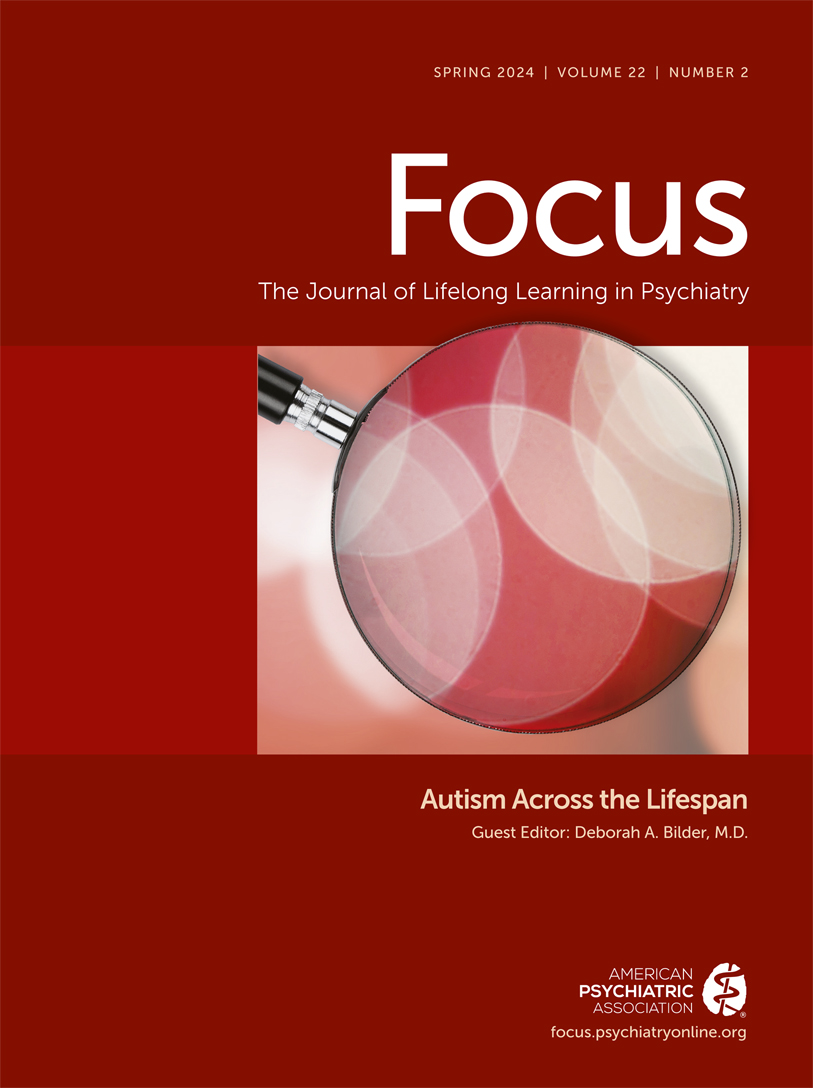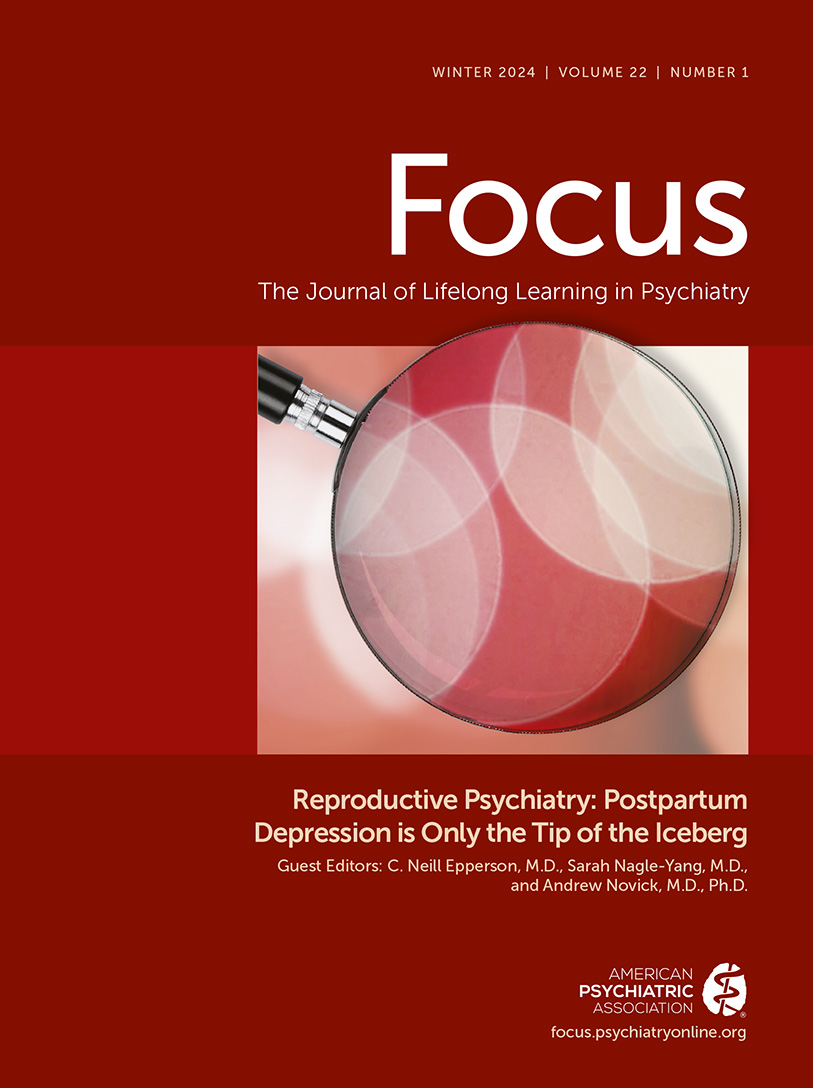Focus
- Volume 2
- Number 1
- January 2004
EDITORIAL
CLINICAL SYNTHESIS
Publication date: 01 January 2004
Pages7–12In this article we describe our approach to the patient presenting with a first episode of psychosis. This approach differs from the treatment of chronic patients, and it is critical in ensuring that the patient receives proper assessment, treatment, and ...
https://doi.org/10.1176/foc.2.1.7REVIEW
Publication date: 01 January 2004
Pages17–30Schizophrenia is a chronic, debilitating psychotic disorder that affects 1% of adults. Symptoms of the illness are highly variable from person to person but typically include “positive” symptoms (delusions, hallucinations, thought disorganization), “...
https://doi.org/10.1176/foc.2.1.17INFLUENTIAL PUBLICATION
Publication date: 01 January 2004
Pages34–47Illness management is a broad set of strategies designed to help individuals with serious mental illness collaborate with professionals, reduce their susceptibility to the illness, and cope effectively with their symptoms. Recovery occurs when people with ...
https://doi.org/10.1176/foc.2.1.34Publication date: 01 January 2004
Pages48–58Background: Although the principal brain target that all antipsychotic drugs attach to is the dopamine D2 receptor, traditional or typical antipsychotics, by attaching to it, induce extrapyramidal signs and symptoms (EPS). They also, by binding to the D2 ...
https://doi.org/10.1176/foc.2.1.48Publication date: 01 January 2004
Pages59–67Objective: The authors compared the efficacy and safety of three atypical antipsychotics (clozapine, olanzapine, and risperidone) with one another and with haloperidol in the treatment of patients with chronic schizophrenia or schizoaffective disorder. ...
https://doi.org/10.1176/foc.2.1.59Publication date: 01 January 2004
Pages68–77Objective: Although skills training is a validated psychosocial treatment for schizophrenia, generalization of the skills to everyday life has not been optimal. This study evaluated a behaviorally oriented method of augmenting clinic-based skills training ...
https://doi.org/10.1176/foc.2.1.68Publication date: 01 January 2004
Pages78–94Twenty-five intervention studies were meta-analytically examined regarding the effect of including relatives in schizophrenia treatment. The studies investigated family intervention programs to educate relatives and help them cope better with the patient’...
https://doi.org/10.1176/foc.2.1.78Publication date: 01 January 2004
Pages95–101We conducted a meta-analysis using all available controlled treatment outcome studies of cognitive therapy (CT) for psychotic symptoms in schizophrenia. Effect sizes were calculated for seven studies involving 340 subjects. The mean effect size for ...
https://doi.org/10.1176/foc.2.1.95Publication date: 01 January 2004
Pages102–110After 20 years of development and research, dual diagnosis services for clients with severe mental illness are emerging as an evidencebased practice. Effective dual diagnosis programs combine mental health and substance abuse interventions that are ...
https://doi.org/10.1176/foc.2.1.102Publication date: 01 January 2004
Pages111–121Objective: The authors conducted a review and meta-analysis of studies that compared the efficacy and tolerability of typical and second-generation antipsychotics for patients with treatment-resistant schizophrenia. Method: A systematic search revealed 12 ...
https://doi.org/10.1176/foc.2.1.111Publication date: 01 January 2004
Pages122–130Objective: The goal of this report was to examine the clinical course following neuroleptic discontinuation of patients with recent-onset schizophrenia who had been receiving maintenance antipsychotic treatment for at least 1 year. Method: Fifty-three ...
https://doi.org/10.1176/foc.2.1.122Publication date: 01 January 2004
Pages131–137Objective: Many studies have validated the grouping of schizophrenic symptoms into three independent dimensions: negative, psychotic, and disorganized. Negative symptoms are considered to be an important prognostic indicator, but this clinical observation ...
https://doi.org/10.1176/foc.2.1.131Publication date: 01 January 2004
Pages138–145Most of the evidence to support an association between estrogen and psychosis is indirect and comes from clinical studies of gender differences in schizophrenia and from studies of fluctuating levels of psychopathology in different phases of the menstrual ...
https://doi.org/10.1176/foc.2.1.138Publication date: 01 January 2004
Pages146–157Objective: The study of individual psychotherapeutic approaches to the treatment of schizophrenia has yielded equivocal findings, partly because of methodologic problems. Further, the ability of psychosocial treatments to prevent psychotic relapse appears ...
https://doi.org/10.1176/foc.2.1.146Publication date: 01 January 2004
Pages158–174This article describes the theoretical background, origins, and development of a new clinical service for intervention in the putatively prodromal phase of schizophrenia and other psychotic disorders. Establishing such a service required examination of ...
https://doi.org/10.1176/foc.2.1.158Publication date: 01 January 2004
Pages175–186Balancing the demonstrated effectiveness of antipsychotic medication for long-term maintenance treatment of schizophrenia with the risk of developing tardive dyskinesia (TD) has led to attempts to reduce dosage. Research using two methods is reviewed in ...
https://doi.org/10.1176/foc.2.1.175Past Issues
View Issues Archive
Vol. 22 | No. 4

Vol. 22 | No. 3

Vol. 22 | No. 2
